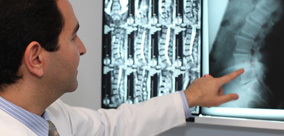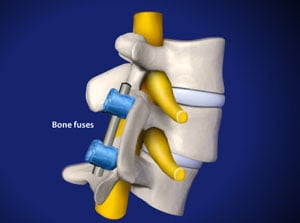 Scoliosis is one of the most under-diagnosed back issues out there. Many people, if they don’t get it uncovered in childhood, may suffer from a minor form of the condition for years without even realizing it. If you ever suspect that your or your child’s spine curves to an unhealthy degree, you do have options.
Scoliosis is one of the most under-diagnosed back issues out there. Many people, if they don’t get it uncovered in childhood, may suffer from a minor form of the condition for years without even realizing it. If you ever suspect that your or your child’s spine curves to an unhealthy degree, you do have options.
When a person’s spine is healthy, it should point straight up vertically so that the body is completely perpendicular to the ground. If a section of the spine bends forward in any manner, this is known as scoliosis. For some, the deviation will be so minimal as to not be noticeable. For others, it could have a significant impact in quality of life, and it’s important that such persons get the issue corrected.
[separator headline="h3" title="Causes Not Always Easy To Pin Down"]
More than four out of five cases of scoliosis cannot be attributed to one cut and dried cause, although there are certain inferences that can be made about the condition. For one thing, a child going through growth spurts as they age may see their spine begin to curve, a condition that’s more likely if the parents themselves have a history of scoliosis.
At other times, scoliosis may be the result of a traumatic incident that causes degeneration. This may not manifest until years down the line, or the degeneration may not be the result of an accident at all. Scoliosis is also a possibility when an individual suffers from cerebral palsy, muscular dystrophy, and other neuromuscular conditions.
[separator headline="h3" title="What To Look Out For"]
Diagnosing scoliosis is tricky because there are many who don’t come in to a doctor due to the simple fact that they don’t realize there’s a problem. Scoliosis will often not appear on an individual’s radar until they or a loved one notice that their legs appear of-balance or their shoulder blades seem to protrude.
There are some cases, though, where an individual will start to experience spinal pain. This can lead numbness to occur in the spine or to radiate outward into an individual’s limbs. Numbness can be accompanied by breathing difficulties, which could also manifest on their own without attendant pain or numbness.
[separator headline="h3" title="Proper Treatment Depends On Age, Severity"]
 In these situations, it’s imperative to explore potential treatment options. An x-ray will be able to reveal the degree to which your spine has deviated, and anything over 25% should prompt some sort of medical intervention.
In these situations, it’s imperative to explore potential treatment options. An x-ray will be able to reveal the degree to which your spine has deviated, and anything over 25% should prompt some sort of medical intervention.
For children, a brace may be the way to go. There are a variety of types that may be utilized based on the section of the spine suffering from scoliosis, and most can be positioned underneath a child’s clothing so that their peers won’t even notice that it’s there.
For adults, treating scoliosis is, unfortunately, not a simple matter of physical therapy. If caught early, a doctor can help limit the spinal deviations further, but if the deviation has already progressed more than 50%, surgery should be considered. DISC Sports & Spine Center has multiple options available for patients, including XLIF and spinal fusion surgery.
About the author




